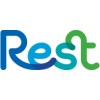As documented by Tejesh Jayaprakash
When you work in a particular industry over a period of time, you get specialized in that field. For me, it was application platforms, but working at a product company and overhearing coworkers talk about Big Data and the Internet of Things (IoT), I got curious. Yes, I specialized in my field, but I was eager to learn and do more.
I was really interested in how you capture data, analyze it, and use it to make better decisions. It was a lot of buzz back then, four years ago. That’s what inspired me — that it was an emerging trend. I was ready for something different, and I knew that to move into that area, I’d have to invest in myself and get a professional certification. I knew that the certification would also help me to be confident in my knowledge. I wanted to make sure I got my training from a good training provider and hence, chose Simplilearn.
Studying Data Science on My Own
I learned about Simplilearn from one of my managers. I did the online ITIL® Foundation course because my employer required it, but while browsing through other courses, I found data science. At that time, I wanted to learn more about it, so I actually enrolled for that one, as well. I was engaged enough with the material to get through the course quickly. I did it in about eight weeks, spending two to three hours every day.
I took the Data Scientist course in 2015. I’m currently working on the supply chain planning side; the planning stage involves a lot of data analysis and forecasting and predictive analysis. And now I understand the concept of the software. This learning has helped me get a broader understanding of how to analyze data to make sense of it and predict how data will behave in the future. It gave me a very good understanding as to how you plan things and how the algorithm works, and how the regression modeling and other statistical modeling work.
I liked the structure of the course because it starts with how you analyze data, generate data models and how you forecast using these models. Besides, you have three different tools to learn: R, SAS, and Excel. The course teaches, in detail, how to use R and SAS software, and how to use them within Excel. I received step-by-step instruction as to how I could perform things and what I have to be looking for, and what the additional options are that I have within each software. R has also become something you must know if you want to be a data analyst. I use it in daily work.
For me, however, learning business analytics with Excel was the most important because everyone, and every organization, uses it. Even the planning tool that we use is Excel on the front end and SAP on the back end.
Learning how to use Excel for data analytics was very helpful for me. I never knew there was an option for enabling a data analytics tab and then you can do many other things rather than just adding and subtracting in Excel. I use it daily to calculate a regression model or confidence interval. I just go into the data analytics tab then get my data and then I can actually tell you how you could build a model based on the tables.
In addition to the quality of the course material and the knowledge I gained, I appreciated the customer support I got with Simplilearn. The customer support was really helpful when I had issues. I also received good feedback on my assignments and advice for improvement, which I found very supportive and very accommodating. Cost wise, it’s very reasonable and you get good value for your money.





